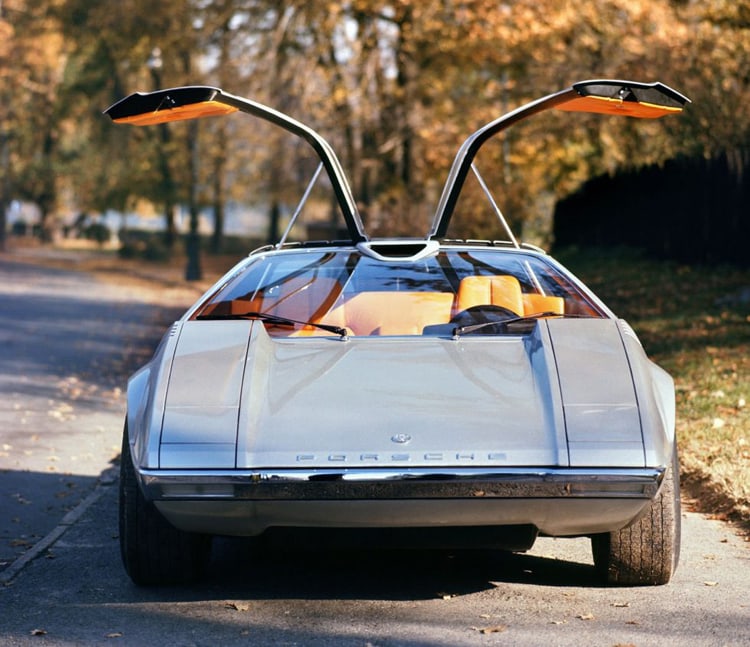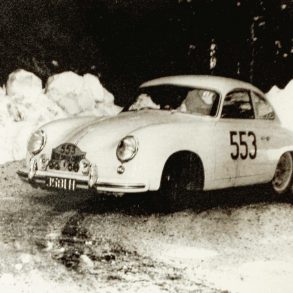It’s doubtful that any designer or design house has done more seminal mid-engined automotive designs than has the incomparable Giorgetto Giugiaro and his (and son Fabrizio’s) ItalDesign Giugiaro.
Though it goes without saying that Pininfarina has created many great mid-motored Ferrari sports cars, then, of course, there’s the Murray/Stevens McLaren F1, plus many edgy, uber exotic Lamborghini supercars by a variety of designers. The house that the Giugiaros built did more of them earlier, and in so many instances, better than anyone else.

Among Giugiaro, the senior’s earlier greats are the De Tomaso Mangusta while at Ghia, a car lacking in excellent chassis engineering but remains an absolute beauty in terms of exotic proportion, car design, and detailing. Later came the Maserati Bora and Merak, the American Motors AMX/3, the Lotus Esprit, the DeLorean, the Gallardo, the still fabulous Maserati Boomerang, ad infinitum.
Back in the day, a design study or concept car dream machine would spend a year or so as a turntable toy working the international auto show circuit. It was then often sold off into private hands to help pay for building next year’s new concept, especially in smaller independent design firms.

Among Giugiaro’s projects for the 1970 auto show season was the ItalDesign Porsche Tapiro – a crisply folded mid-engined double gull wing doors (gullwing doors for both the passenger compartment and the engine bay) doored exotic coupe based on a Volkswagen Porsche 914/6.
Though it’s a unique and generally fresh design, you’ll see the Giugiaro’s famous handprints all over it, with shadings of the Mangusta and what would become the Esprit, DeLorean, and Bora in some of its shapes, proportion, and surface detail.

It was painted the prototypical metallic silver with a warm butterscotch leather-lined cabin.
Power came courtesy of Porsche’s S-spec 2.4-liter flat-six, purportedly good for 220 hp, backed by a 5-speed transaxle, culminating in a reported top speed of about 150mph.

It may have seemed somewhat unusual (then or now) to see an obviously Italianate exotic doorstop wearing Porsche’s chromed logo letters on the nose.
The Porsche Tapiro concept was first unveiled at the 1970 Turin Auto Show in Turin, Italy. The vehicle then afterward proceeded to make its US première in 1971 at the 5th Annual Los Angeles Imported Automobile and Sports Car Show.

It was likely evident from the beginning that Porsche had no plans or intention on licensing to produce the design from ItalDesign, so in 1972 the one-off Tapiro was sold off after completing its rounds during the 1970 and 71 auto show cycles. This is where the story becomes slightly murky.

The car was sold to a reputed prominent Spanish industrialist. You will recall that in the early 70s, politically motivated executive and royalty kidnappings, murders, and car bombings were unfortunately common occurrences.
It is purported that a group of social activists who strongly objected to the Tapiro’s owner’s trade and labor relations policies set out to make their displeasure clear in the most dramatic of ways; they planted a bomb beneath the car; it is unclear if the group intended to simply destroy the vehicle or the owner with it. No matter, the former is what happened, and the ensuing exposition caused it essentially irreparable fire damage—news reports of the day mention no injuries.

What a shame, what a waste. Some years later, the Giugiaros reacquired the badly burnt shell but not entirely destroyed body/chassis, and in recognition of its short but now somewhat ominous life, mounted what was left of the Tapiro to a large plinth structure, displaying it “lawn sculpture style” in the front garden of the ItalDesign HQ in Torino, Italy.
Three of the wheels remain attached; remarkably, two of them still wearing original tires that generally appear undamaged. The engine is long gone, but the transaxle remains intact and in situ.



Vestiges of the front bulkhead and steering column remain. The Tapiro’s shape is still largely well defined, although, of course, the glass from all four gullwing window openings is missing. As the car now lives outside full time, all of the sections of the vehicle where the paint was burned away have significantly rusted.


Could the Porsche Tapiro be restored? Yes, it’s possible, although it would be a Herculean (and brutally expensive) undertaking, given the warp damage from the fire and the onset of severe rust over the ensuing years. Anything can be restored, but in this case, at what cost, and to what extent and benefit?
Will it be? Doubtful — given the above, and also that the Giugiaros are pretty proud of the statement it makes just as it is. Beautiful and thought-provoking, the Tapio is a testament to being careful how you run your business, and of course…watch where you park.

Photography by the author, and courtesy ItalDesign.











It is both surprising and impressive how well the Tapiro seems to have withstood the supposed bomb that went off under it. Perhaps it was an incendiary device rather than the more typical TNT or plastic variety.
The omission of Bertone among pioneers of mid-engine car design was also a bit negligent, considering the work Marcello Gandini was responsible for during his tenure there. The Miura, Countach, and Lancia Stratos can’t be ignored…
Sniggles aside, I do love the website and particularly enjoy Sports Car Digest’s excellent event coverage and photography. Keep it up!
The Tapiro in it’s day represented so many fresh idea’s and it’s unfortunate demise like that of the Andrea Dorea only adds to it’s legend. Still even in it’s current state is easy to see how the car’s incredible design has stood the test of time, perhaps a recreation of the car could be considered.
This story is not true. The Tapiro was owned by a famous musician called Waldo de los Rios. His wife, in her memories, explained that the car got burnt while being droven around a big park in Madrid. Just a bit afterwards, Waldo commited a suicide, and the car remained forgotten in his house.